Experience Tranquility at the Qing Western Tombs: A Must-Visit Cultural Site
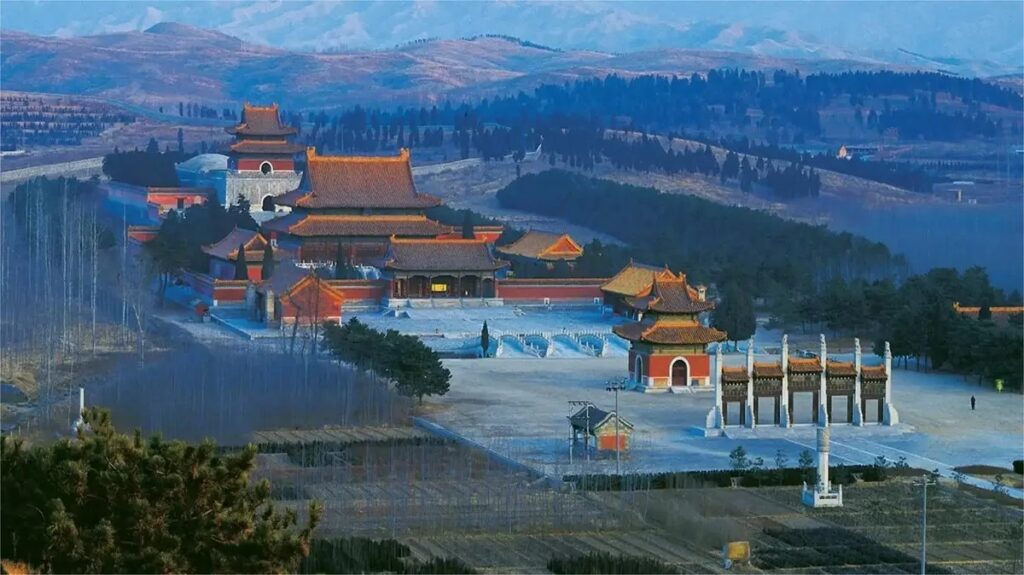
An Essential Guide to Visiting Qing Western Tombs
In This Guide
- An Essential Guide to Visiting Qing Western Tombs
- The Rich History and Legends of Qing Western Tombs
- Main Highlights: What You Absolutely Can’t Miss
- Planning Your Visit: A Practical Guide
- Tickets: Prices, Booking, and Tips
- How to Get There: A Complete Transportation Guide
- Local Cuisine and Accommodation Nearby
- Frequently Asked Questions
- Final Thoughts on Your Trip
Nestled at the foot of the serene Yongning Mountain and embraced by the gentle curves of the Yishui River, the Western Qing Tombs (保定易县清西陵景区) stand as an evocative testament to China’s imperial past. This sprawling necropolis, located about 120 kilometers west of Beijing, is more than just a burial site; it is a grand narrative carved in stone that tells the story of the Qing Dynasty (1644-1911) and its rulers.
As one of the most significant royal mausoleums in China, the Western Qing Tombs boast an impressive collection of fourteen tombs, housing the remains of four emperors, their empresses, and numerous royal dignitaries. Each mausoleum is a unique architectural marvel, showcasing the intricate artistry and hierarchical social structure of the Qing era. The striking use of yellow glazed tiles atop the emperors’ tombs, contrasted with the green-roofed structures of lesser royals, reflects the rigid stratification of feudal society.
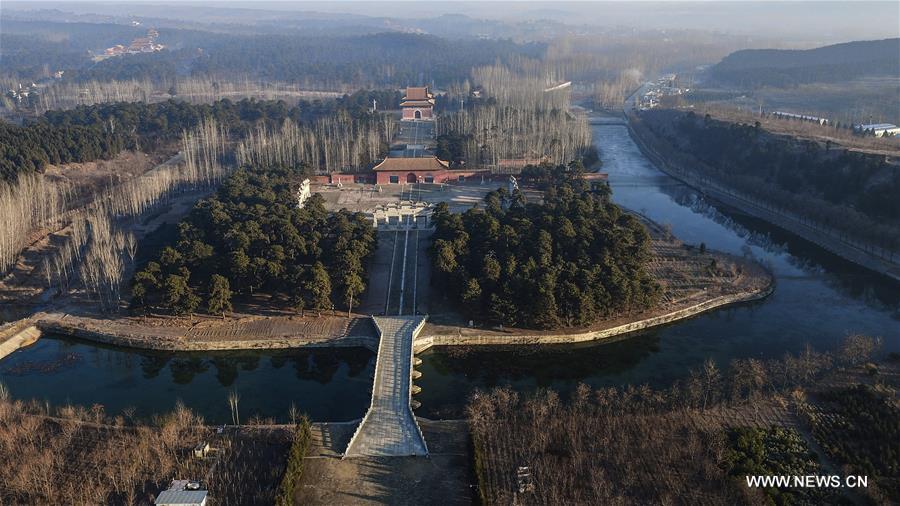
Qing Western Tombs.
Visitors to this UNESCO World Heritage site are treated to a captivating blend of history and nature. The surrounding landscape, adorned with over 20,000 ancient pines, sets a tranquil scene that invites reflection on the lives and legacies of those interred here. From the majestic Tailing, the largest and most ornate tomb, to the smaller yet equally beautiful Chongling, each site offers a glimpse into the opulence and spiritual beliefs of the time.
Key Highlights
-
Tailing (泰陵): The tomb of Emperor Yongzheng, known for its grandeur and the intricacy of its design. The entrance features a series of arched bridges and stunning stone arches, leading visitors into a world of imperial wealth.
-
Changling (长陵): Burial site of Emperor Jiaqing, famous for its exquisite Echoing Wall, which creates a unique acoustic effect, reminiscent of the famed structures found in the Temple of Heaven.
-
Muling (穆陵): Emperor Daoguang’s mausoleum, distinguished by its fragrant Nanmu wood and elaborate dragon motifs, signifying imperial power and auspiciousness.
-
Chongling (崇陵): The final resting place of Emperor Guangxu, notable for its unique use of iron and bronze in construction, symbolizing a modern approach to imperial mausoleum design.
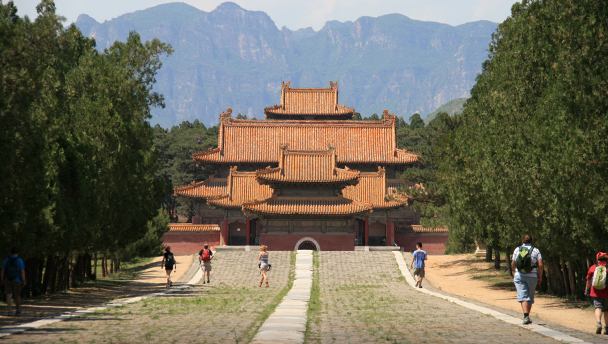
Qing Western Tombs.
Practical Information
To make the most of your visit, plan for at least four hours to explore the sprawling grounds and absorb the rich history. The tombs are open year-round, with varied admission fees depending on the season. Accessing the Western Qing Tombs is straightforward, with options available from major cities like Beijing and Tianjin via train and local bus services.
In this essential guide, we invite you to embark on a journey through time at the Western Qing Tombs—a place where nature, history, and culture converge, leaving an indelible mark on every traveler fortunate enough to tread its sacred grounds.
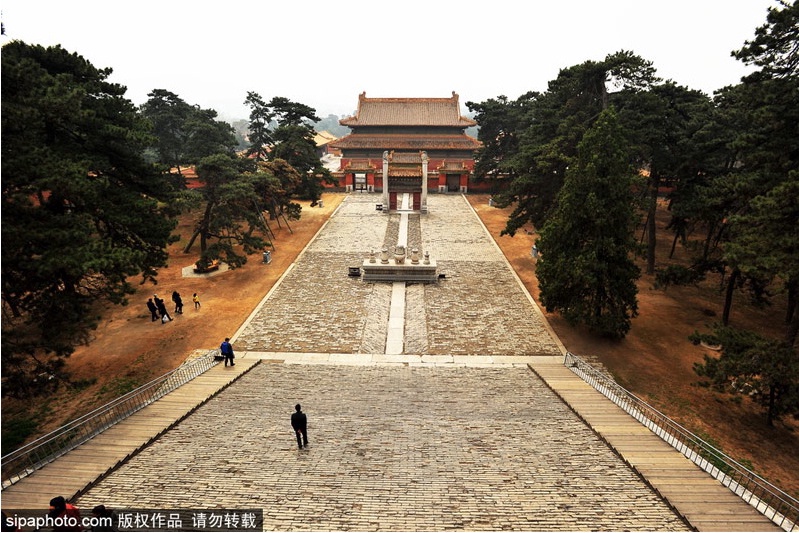
Qing Western Tombs.
The Rich History and Legends of Qing Western Tombs
The Qing Western Tombs, or 清西陵 (Qīng Xī Lìng), hold a rich tapestry of history and legend that captivates visitors with its grandeur and significance. Nestled in the verdant embrace of Yongning Mountain, these tombs not only serve as the final resting place for Qing Dynasty emperors but also embody the intricate cultural and architectural heritage of China.
Historical Significance
Constructed between the early 18th and late 19th centuries, the Western Qing Tombs stand apart from the Eastern Qing Tombs, which had historically been the preferred burial site for the Qing emperors. This divergence began with Emperor Yongzheng (reigned 1723–1736), who, believing the site of the Eastern Tombs unsuitable, chose the lush landscape of the Western Tombs for his mausoleum, Tailing. This marked a significant departure from Ming practices, where emperors were traditionally buried near their forefathers.
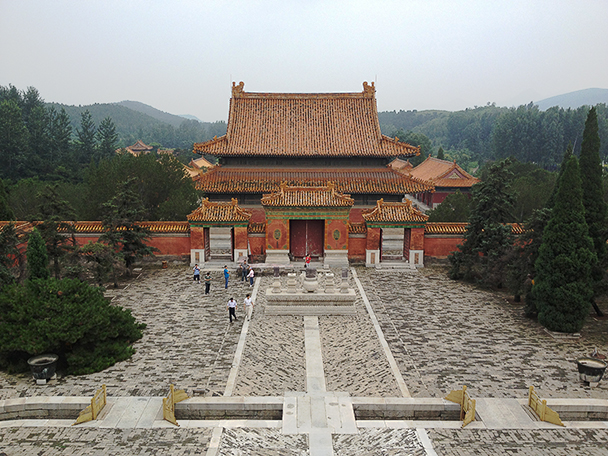
Qing Western Tombs.
Following Yongzheng, the subsequent emperors alternated their burial sites between the Western and Eastern Tombs, a practice that sometimes deviated from the established rule. For instance, Emperor Daoguang initially buried his first empress at the Eastern Tombs but later relocated her to the Western Tombs, demonstrating the fluidity of tradition in the face of practical concerns. The Western Qing Tombs ultimately became the resting place for four emperors: Yongzheng, Jiaqing, Daoguang, and Guangxu.
Architectural Marvels
The architecture of the Western Qing Tombs is a testament to the artistry and skill of ancient Chinese craftsmanship. Each mausoleum, distinguished by its unique design, illustrates the rigid social hierarchies of the Qing Dynasty. The emperors’ tombs are adorned with yellow glazed tiles, symbolizing imperial power, while those of empresses and concubines exhibit green roofs.

Qing Western Tombs.
The tombs encompass a vast area, featuring over a thousand rooms within palatial structures and an array of ancient stone carvings. Among the notable buildings are the Beilou, which houses steles commemorating the achievements of the emperors, and the Chaofang, where sacrificial offerings were prepared. The Long’en Dian, or Palace for Imperial Blessings, stands as a ceremonial venue for worship, while the Baoding serves as the final resting place within the underground palace.
Legends and Lore
The Western Qing Tombs are steeped in legends that enhance their mystique. One popular tale revolves around the construction of Tailing, where it is said that Emperor Yongzheng meticulously chose the site for its auspicious feng shui—believing that the landscape would provide him with an eternal kingdom. This belief in geomancy, or the art of placement, was integral to the tomb’s design, reflecting the emperor’s desire for harmony and prosperity in the afterlife.
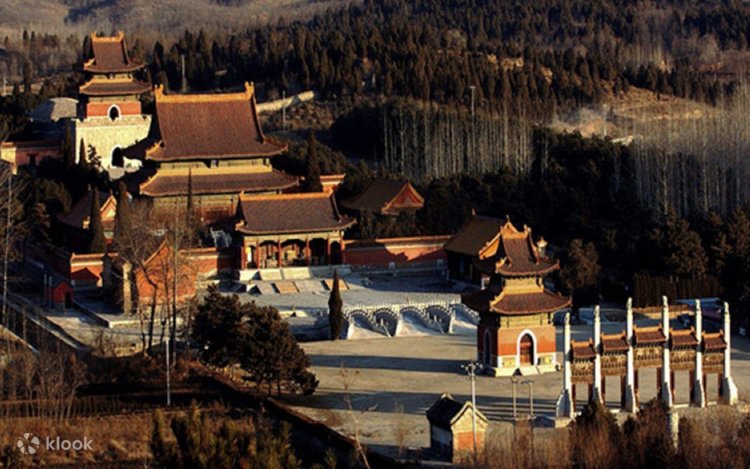
Qing Western Tombs.
Another intriguing legend pertains to the Echoing Wall found at Changling, the mausoleum of Emperor Jiaqing. This architectural wonder is said to possess the ability to carry sounds over long distances, creating a unique auditory experience for visitors. Locals share stories of whispers carried by the wind, echoing the voices of the past—a phenomenon that continues to fascinate those who encounter it.
Cultural Heritage
Today, the Qing Western Tombs are recognized as a UNESCO World Heritage Site, celebrated for their architectural significance and the cultural values they represent. As one of the most important ancient mausoleum complexes in China, they offer an unparalleled glimpse into the life, beliefs, and customs of the Qing Dynasty.
The site is not only a pilgrimage for history enthusiasts but also a serene escape for nature lovers, surrounded by thousands of ancient pines that have witnessed centuries of history. Visitors can immerse themselves in the tranquil beauty of the landscape while exploring the intricate details of the tombs, each telling a story of imperial grandeur and the enduring legacy of Chinese civilization.

Qing Western Tombs.
In summary, the Qing Western Tombs are a captivating blend of history, architecture, and legend, inviting travelers to walk amidst the echoes of China’s imperial past and uncover the rich narratives that define this remarkable site.
Main Highlights: What You Absolutely Can’t Miss
Discovering the Western Qing Tombs: A Journey Through China’s Imperial Past
Nestled at the foot of the majestic Yongning Mountain, the Western Qing Tombs (保定易县清西陵景区) stand as a testament to the grandeur of the Qing Dynasty (1644-1911). This UNESCO World Heritage Site, located approximately 120 kilometers west of Beijing, is not only a remarkable historical site but also a stunning natural retreat, surrounded by ancient pines and the gentle flow of the Yishui River. Here’s what you absolutely cannot miss during your visit to this extraordinary site.
1. The Majestic Tailing (泰陵)
Begin your exploration at Tailing, the mausoleum of Emperor Yongzheng, which is the largest and most complete of the four major tombs. Established in 1730 and completed after the emperor’s death, Tailing features a captivating entrance marked by an arched bridge leading to a grand red door and three intricately designed stone arches. The tomb’s design and layout reflect the opulence of imperial life, making it a must-see for history enthusiasts.

Qing Western Tombs.
2. The Echoing Wall of Changling (长陵)
Next, head to Changling, the resting place of Emperor Jiaqing. Here, you can experience the acoustical wonder of the Echoing Wall, which creates fascinating sound effects similar to those found at the Temple of Heaven. The ornate Long’en Dian, with its gem-like patterned floor, adds to the tomb’s allure, earning it the nickname “Full of Gems in the Palace”. Don’t miss the chance to capture the enchanting ambiance of this remarkable site.
3. The Enchanting Muling (穆陵)
Muling, the mausoleum of Emperor Daoguang, may not be as vast as Tailing or Changling, but its beauty is undeniable. The interior of Long’en Dian is adorned with fragrant Nanmu wood and decorated with dynamic dragon motifs. As you walk through this tomb, you’ll feel the spirit of ancient Chinese craftsmanship and artistry, embodied in every detail.
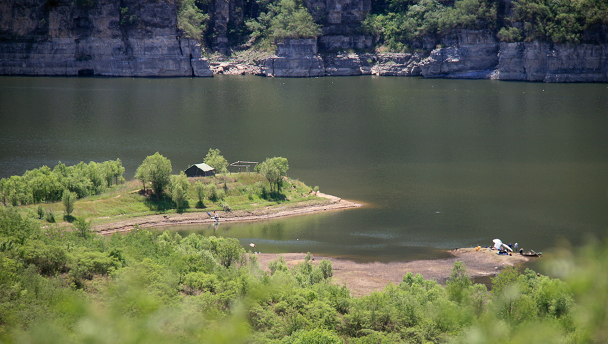
Qing Western Tombs.
4. The Unique Chongling (崇陵)
Chongling, the final resting place of Emperor Guangxu, is distinguished by its smaller size yet vibrant decorations. Constructed from iron and bronze, this mausoleum stands out with its flamboyant aesthetic. Its unique architectural style offers insight into the evolution of tomb design during the later years of the Qing Dynasty.
5. The Surrounding Natural Beauty
The Western Qing Tombs are not just about the mausoleums. The entire complex is sprawled over an impressive 800 square kilometers, offering plenty of scenic walking paths lined with ancient pines. As you stroll through the grounds, take a moment to appreciate the tranquil surroundings and the harmony between nature and history. The lush landscape provides a picturesque backdrop that enhances the majesty of the tombs.
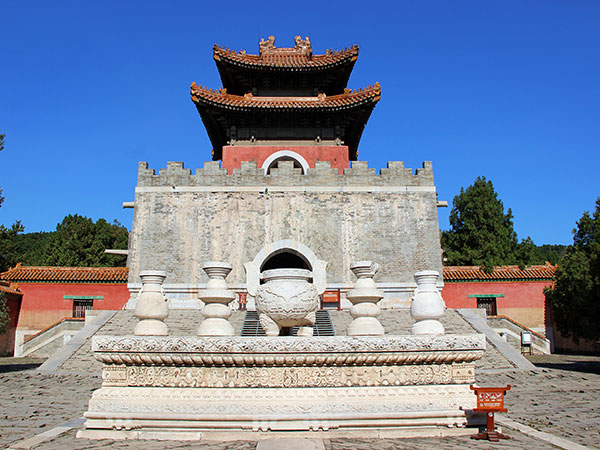
Qing Western Tombs.
6. Cultural Insights and Architectural Marvels
Throughout the site, you’ll encounter over a thousand rooms and a wealth of ancient stone structures and carvings. Key highlights include:
– Beilou (碑楼): This pavilion houses a stele recording the achievements of the emperors.
– Chaofang (朝房): The Hall of Worship, where sacrificial offerings were prepared.
– Long’en Dian (隆恩殿): The Palace of Imperial Blessings, a space for sacred rituals.
– Baoding (宝顶): The Treasure Top, marking the burial site of the emperor.
Each structure is a reflection of the complex social hierarchy of the time, showcasing the elaborate rituals surrounding death and the afterlife.
7. Practical Information for Your Visit
- Admission Fees: Prices vary by season, ranging from CNY 10 to CNY 108 for a comprehensive ticket covering all major tombs.
- Opening Hours: 8:00 AM to 5:30 PM from April to October; 8:30 AM to 5:00 PM from November to March.
- Recommended Visit Time: Plan for at least 4 hours to fully appreciate the site.

Qing Western Tombs.
Getting There
The Western Qing Tombs are accessible by high-speed train from Beijing to Baoding, followed by local buses and a short taxi ride. With well-marked paths and ample signage, navigating the site is straightforward and enjoyable.
Conclusion
The Western Qing Tombs offer an unparalleled glimpse into the imperial past of China, combining stunning architecture, rich history, and breathtaking natural beauty. Whether you are a history buff, an architecture enthusiast, or simply seeking a serene escape, this site is sure to leave an indelible mark on your journey through China’s cultural landscape. Don’t miss the chance to delve into the stories of emperors and empresses as you explore this remarkable heritage site!
Planning Your Visit: A Practical Guide
Discovering the Enchantment of the Western Qing Tombs
The Western Qing Tombs, known as 保定易县清西陵景区, represent a significant chapter in China’s imperial history and are a breathtaking testament to Qing Dynasty architecture and culture. Nestled at the foot of the Yongning Mountain in Hebei Province, this UNESCO World Heritage site is a must-visit for any traveler intrigued by the rich tapestry of Chinese history.
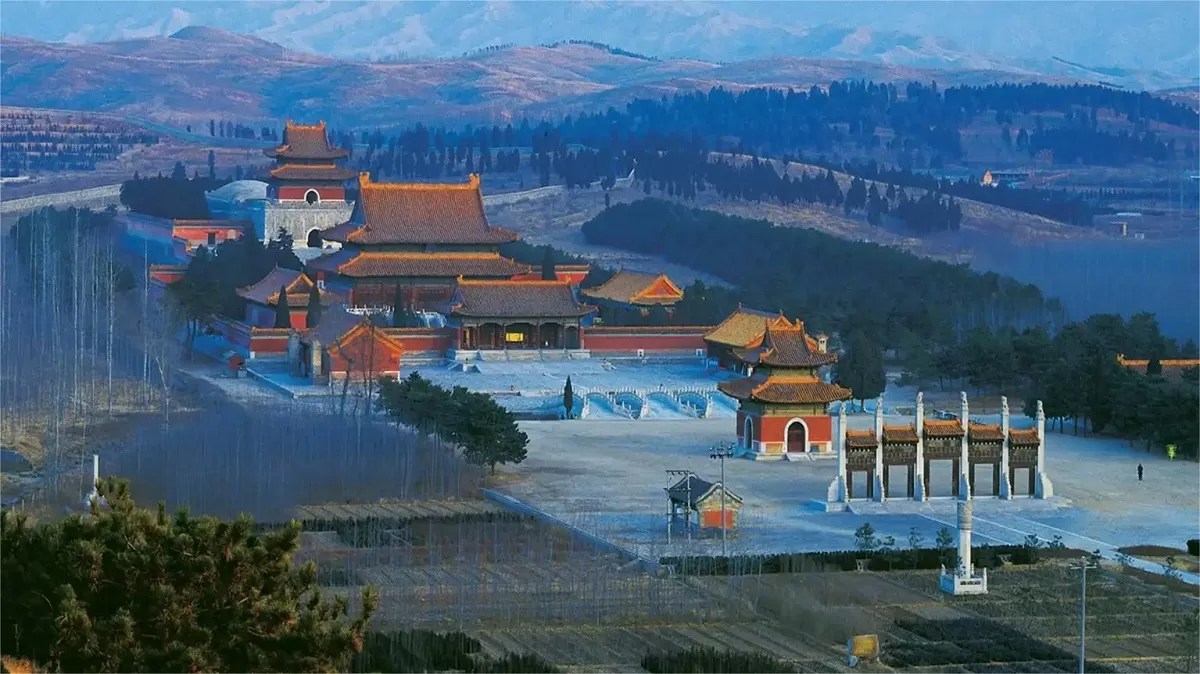
Qing Western Tombs.
Getting There
From Beijing:
– High-Speed Train: Take a high-speed train from Beijing to Baoding Railway Station (CNY 53-76). Upon arrival, transfer to Bus No. 681 to Yi County Bus Station, and then take Bus No. 9 to the Western Qing Tombs.
– Coach: Alternatively, you can catch a coach from Liuliqiao Coach Station to Yi County and then take a taxi to the tombs (approximately CNY 50).
From Tianjin:
– High-Speed Train: Travel from Tianjin to Baoding Railway Station (CNY 57.5), then follow the same bus route as mentioned above.
From Shijiazhuang:
– High-Speed Train: Take a train to Baoding Railway Station (CNY 59-78) and proceed with the bus transfers.
Admission and Opening Hours
- Admission Fees (April – October):
- Tailing: CNY 45
- Changxiling: CNY 20
- Muling: CNY 10
- Chongling: CNY 45
- Yongfu Temple: CNY 15
-
Total: CNY 108 for a full ticket
-
Admission Fees (November – March):
- Tailing: CNY 35
- Changxiling: CNY 15
- Muling: CNY 10
- Chongling: CNY 35
- Yongfu Temple: CNY 15
-
Total: CNY 80 for a full ticket
-
Opening Hours:
- April – October: 8:00 AM – 5:30 PM
-
November – March: 8:30 AM – 5:00 PM
-
Recommended Visit Duration: Approximately 4 hours to fully appreciate the grandeur of the site.
What to Expect
The Western Qing Tombs encompass a sprawling area of about 800 square kilometers, featuring 14 royal mausoleums that are the final resting places of 78 royal members, including four emperors and their consorts. The architecture reflects the strict hierarchy of Qing society, with the emperors’ tombs adorned with yellow glazed tiles, while lesser tombs are decorated with green tiles.
Key Highlights:
– Tailing (泰陵): The tomb of Emperor Yongzheng, known for its majestic structures and historical significance.
– Changling (长陵): The resting place of Emperor Jiaqing, featuring intricate stonework and the famed Echoing Wall.
– Muling (穆陵): Emperor Daoguang’s tomb, celebrated for its fragrant Nanmu wood and dragon motifs.
– Chongling (崇陵): The smallest tomb, belonging to Emperor Guangxu, known for its distinctive iron and bronze decorations.
Tips for Your Visit
- Wear Comfortable Shoes: The site covers a large area, and you will be walking quite a bit, so comfortable footwear is essential.
- Bring Water and Snacks: While there are facilities, having your own refreshments will keep you energized during your exploration.
- Plan Your Route: Familiarize yourself with the layout of the tombs to make the most of your visit.
- Guided Tours: Consider joining a guided tour for a deeper understanding of the history and significance of the tombs.
Cultural Etiquette
As you explore this sacred site, respect the cultural significance of the tombs. Avoid loud noises, refrain from climbing on the tombs or structures, and be mindful of other visitors.
The Western Qing Tombs offer an enchanting glimpse into the lives and legacies of China’s last imperial dynasty, surrounded by stunning natural beauty. Whether you are a history buff, a culture enthusiast, or simply in search of serene landscapes, this site promises a memorable experience that resonates with the echoes of a bygone era.
Tickets: Prices, Booking, and Tips
Visiting the Qing Western Tombs: Ticket Information and Travel Tips
Exploring the Qing Western Tombs is a journey through history, where majestic architecture meets serene natural beauty. To ensure a smooth visit, here’s everything you need to know about ticket pricing, booking options, and essential tips.
Admission Fees
The admission prices vary by season, providing a budget-friendly option for visitors throughout the year:
April to October:
– Tailing (Yongzheng’s Tomb): CNY 45
– Changling (Jiaqing’s Tomb): CNY 20
– Chongling (Guangxu’s Tomb): CNY 45
– Muling (Daoguang’s Tomb): CNY 10
– Yongfu Temple: CNY 15
– Total through ticket: CNY 108
November to March:
– Tailing: CNY 35
– Changling: CNY 15
– Chongling: CNY 35
– Muling: CNY 10
– Yongfu Temple: CNY 15
– Total through ticket: CNY 80
Free Admission:
– Children under 1.2 meters (3.9 feet) and seniors over 70 years old can enter for free, making it an ideal excursion for families and older travelers.
Opening Hours
The site is open year-round, with slightly varying hours depending on the season:
- April to October: 8:00 AM – 5:30 PM
- November to March: 8:30 AM – 5:00 PM
Recommended Visit Duration: Plan to spend at least 4 hours to fully appreciate the grandeur of the tombs and their surroundings.
Booking Tickets
Tickets can typically be purchased at the entrance of the Qing Western Tombs. However, during peak tourist seasons, it’s advisable to arrive early to avoid long lines.
For a more convenient option, consider booking in advance through various online platforms dedicated to attractions in China. This can save you time and ensure you have your entry secured for your desired date.
Getting to the Qing Western Tombs
Reaching the Qing Western Tombs is relatively straightforward, with several transportation options available:
From Beijing:
1. Take a high-speed train from Beijing to Baoding Railway Station (cost: CNY 53-76).
2. From Baoding, catch Bus No. 681 to Yi County Bus Station.
3. Finally, transfer to Bus No. 9, which will take you directly to the Qing Western Tombs.
Alternatively, you can take a coach from Liuliqiao Coach Station to Yi County and then a taxi (approximately CNY 50) to the tombs.
From Tianjin:
1. Take a high-speed train to Baoding Railway Station (cost: CNY 57.5).
2. Follow the same bus route as above.
From Shijiazhuang:
1. Take a high-speed train to Baoding Railway Station (cost: CNY 59-78).
2. Continue with Bus No. 681 to Yi County, then Bus No. 9 to the tombs.
Tips for a Memorable Visit
- Wear comfortable shoes: The site is expansive, and you’ll be walking a lot.
- Bring water and snacks: Although there may be vendors, it’s always good to be prepared, especially during warmer months.
- Explore the surroundings: Take time to enjoy the natural beauty alongside the historical significance of the tombs.
- Consider a guided tour: If you want to delve deeper into the history and architectural significance, a guided tour can provide valuable insights.
Visiting the Qing Western Tombs is not just a trip; it’s an immersion into the rich tapestry of Qing Dynasty history, surrounded by the tranquil beauty of its landscape. Prepare well, and you’re sure to have an unforgettable experience.
How to Get There: A Complete Transportation Guide
Navigating Your Way to the Magnificent Qing Western Tombs
Visiting the Qing Western Tombs (保定易县清西陵景区) offers an incredible opportunity to delve into China’s rich imperial history and stunning architecture. Nestled at the foot of Yongning Mountain and surrounded by lush greenery, this historic site is easily accessible from major cities like Beijing, Tianjin, and Shijiazhuang. Here’s a comprehensive guide on how to reach this remarkable destination.
From Beijing
- By High-Speed Train
- Step 1: Board a high-speed train at Beijing Railway Station or Beijing South Railway Station.
- Step 2: Arrive at Baoding Railway Station (approximately 1-1.5 hours).
- Step 3: Upon exiting the train station, take Bus No. 681 to Yi County Bus Station (around 30-40 minutes).
- Step 4: Transfer to Bus No. 9, which will take you directly to the Qing Western Tombs.
Cost: Expect to pay between CNY 53-76 for the train ticket. Bus fares should be minimal.
- By Coach
- Step 1: Head to Liuliqiao Coach Station in Beijing.
- Step 2: Take a direct coach to Yi County (journey time around 2-3 hours).
- Step 3: From Yi County, you can grab a taxi to the Tombs (approximately CNY 50).
Cost: Coach tickets vary but are generally affordable.
From Tianjin
- By High-Speed Train
- Step 1: Catch a high-speed train from Tianjin Railway Station to Baoding Railway Station (approximately 1 hour).
- Step 2: Follow the same bus transfer as above: take Bus No. 681 to Yi County Bus Station, then Bus No. 9 to the Tombs.
Cost: Train fare is approximately CNY 57.5.
From Shijiazhuang
- By High-Speed Train
- Step 1: Depart from Shijiazhuang Railway Station on a high-speed train to Baoding Railway Station (about 1-1.5 hours).
- Step 2: Again, take Bus No. 681 to Yi County Bus Station, followed by Bus No. 9 to the Qing Western Tombs.
Cost: Train tickets are priced between CNY 59-78.
Additional Travel Tips
- Best Time to Visit: The tombs are open year-round, but the best months to visit are from April to October when the weather is pleasant.
- Admission Fees: Prices vary seasonally; expect to pay between CNY 10-108 depending on the mausoleum you wish to visit. Children under 1.2m and seniors over 70 may enter free of charge.
- Recommended Visit Duration: Allocate around 4 hours to fully explore the majestic tombs and their surrounding scenery.
Final Thoughts
The Qing Western Tombs are not just a tribute to the emperors of the Qing Dynasty; they are a testament to ancient Chinese craftsmanship and culture. With this guide, you’ll be well-prepared to embark on your journey to this historical treasure. Enjoy your visit!
Local Cuisine and Accommodation Nearby
Exploring the Western Qing Tombs not only immerses you in the grandeur of Qing Dynasty history, but it also offers an opportunity to savor the local flavors and find comfortable accommodations nearby. Here’s a guide to enjoying the culinary delights of the region and some cozy places to rest your head after a day steeped in culture and history.
Culinary Delights
1. Local Specialties
When visiting Yi County, sampling the local cuisine is a must. The region is known for its hearty dishes that reflect both traditional Chinese flavors and local ingredients. Here are a few dishes to look out for:
-
Baoding Roast Duck (保定烤鸭): A regional variant of the famous Peking Duck, known for its crispy skin and tender meat. It’s typically served with thin pancakes, sweet bean sauce, and fresh vegetables.
-
Suan Ni (蒜泥): A garlic-heavy dipping sauce that accompanies many local dishes, enhancing the flavors of meats and vegetables.
-
Bamboo Shoots (竹笋): In spring, fresh bamboo shoots are a local delicacy, often stir-fried with meats or added to soups.
2. Recommended Restaurants
-
Qing Xiang Lou (清香楼): Located in the heart of Yi County, this restaurant specializes in traditional Huabei (North China) cuisine, including their famous roast duck and various noodle dishes. The ambiance is warm and inviting, making it perfect for families or groups.
-
Lao Zhang’s Kitchen (老张的厨房): A local gem known for its home-style cooking. Try their signature stir-fried vegetables and braised meats. The friendly staff and rustic decor add to the charm.
-
Xiang Ying Restaurant (香樱餐厅): This eatery offers a diverse menu with a focus on local ingredients. The steamed fish and stir-fried greens are particularly popular among locals.
Comfortable Stays
After indulging in the local flavors, you’ll want a cozy place to unwind. Here are some accommodation options near the Western Qing Tombs:
1. Yi County Hotel (易县宾馆)
This hotel is conveniently located just a short drive from the tombs. It offers comfortable rooms with modern amenities and a restaurant serving both local and international cuisine. The staff is known for their hospitality, ensuring a pleasant stay.
2. Baoding Yishui Hotel (保定易水酒店)
Set along the picturesque Yishui River, this hotel boasts beautiful views and a peaceful environment. Guests can enjoy well-appointed rooms, a fitness center, and an on-site restaurant that features local dishes. The hotel is perfect for travelers looking to relax after a day of exploration.
3. Tiananmen Hotel (天安门酒店)
This charming hotel is about 20 minutes from the Western Qing Tombs. It has a traditional Chinese architectural style and offers a range of rooms. The on-site dining option serves a mix of local and Western dishes, catering to diverse tastes.
Conclusion
Visiting the Western Qing Tombs is not just about appreciating the historical significance; it’s also an opportunity to dive into the local culture through its cuisine and hospitality. Whether you’re savoring the rich flavors of Baoding Roast Duck or unwinding at a comfortable hotel, your experience will be made all the more memorable by the warmth and charm of Yi County. Enjoy your journey through time and taste!
Frequently Asked Questions
Frequently Asked Questions about the Qing Western Tombs
1. What are the Qing Western Tombs?
The Qing Western Tombs, known as 清西陵 (Qīng Xī Lìng), are a significant complex of imperial mausoleums located in Hebei Province, about 120 kilometers west of Beijing. They serve as the final resting place for several emperors and royal family members from the Qing Dynasty (1644-1911), showcasing traditional Chinese imperial architecture and cultural practices.
2. How do I get to the Qing Western Tombs from Beijing?
Travelers can reach the Qing Western Tombs by taking a high-speed train from Beijing to Baoding Railway Station, which costs between CNY 53-76. From Baoding, take Bus No. 681 to Yi County Bus Station, and then transfer to Bus No. 9, which will take you directly to the tomb area. Alternatively, you can take a coach from Liuliqiao Coach Station to Yi County and then a taxi to the site.
3. What are the opening hours and admission fees?
– Opening Hours:
– April to October: 8:00 AM – 5:30 PM
– November to March: 8:30 AM – 5:00 PM
– Admission Fees:
– April to October: Tailing (CNY 45), Changxiling (CNY 20), Muling (CNY 10), Chongling (CNY 45), Yongfu Temple (CNY 15), with a combined ticket costing CNY 108.
– November to March: Tailing (CNY 35), Changxiling (CNY 15), Muling (CNY 10), Chongling (CNY 35), Yongfu Temple (CNY 15), with a combined ticket costing CNY 80.
– Free for children under 1.2 meters (3.9 feet) and seniors over 70.
4. How long should I plan to spend at the tombs?
A visit to the Qing Western Tombs typically takes about 4 hours. This allows ample time to explore the four main mausoleums and appreciate the intricate architecture and surrounding natural beauty.
5. What can I expect to see at the Qing Western Tombs?
Visitors will find a stunning array of architectural features, including the four main emperors’ mausoleums—Tailing, Changling, Muling, and Chongling. Each site boasts unique elements, such as the ornate Long’en Dian (Palace for Imperial Blessings) and various beautifully crafted stone structures. The site is also surrounded by lush greenery and ancient pines, enhancing its serene atmosphere.
6. Are there any guided tours available?
Yes, guided tours are available and can greatly enhance your experience by providing in-depth historical context and insights about the tombs and their significance. Many travel agencies in Beijing offer day tours that include transportation and a knowledgeable guide.
7. Is the site accessible for visitors with mobility issues?
While the Qing Western Tombs are a historical site, some areas may pose challenges for those with mobility issues due to uneven paths and steps. It’s advisable to wear comfortable shoes and consider bringing a walking aid if necessary. Contacting the site in advance for specific accessibility information is recommended.
8. Are there facilities available at the tombs?
Yes, there are basic visitor facilities at the Qing Western Tombs, including restrooms and information centers. However, it’s wise to bring water and snacks, as options may be limited within the complex.
Final Thoughts on Your Trip
As your journey through the Western Qing Tombs comes to an end, you may find yourself enveloped in a profound sense of both history and tranquility. This remarkable site, rich in cultural significance and breathtaking scenery, offers a unique glimpse into the lives and afterlives of some of China’s most influential emperors.
Reflections on Your Experience
The Western Qing Tombs stand not only as a testament to the grandeur of the Qing Dynasty but also as a celebration of ancient Chinese architectural mastery. Strolling through the meticulously landscaped grounds, surrounded by towering pines and the gentle flow of the Yishui River, you are reminded of the harmony between nature and imperial design. Each mausoleum, with its distinct architectural features and intricate details, tells a story of devotion, tradition, and the enduring legacy of the Qing rulers.
A Cultural Odyssey
Engaging with the tombs of emperors Yongzheng, Jiaqing, Daoguang, and Guangxu offers more than a mere historical account; it’s an invitation to immerse yourself in the rich tapestry of Chinese culture and history. The echoes of time resonate through the majestic halls and serene pathways, inspiring contemplation and reverence for the past. From the vibrant artistry of the Long’en Dian to the serene beauty of the soul towers, every corner holds a narrative waiting to be discovered.
Practical Tips for Future Travelers
As you prepare to leave this sacred site, consider returning to explore the deeper layers of history hidden within the tombs. Plan your visit during the quieter months to fully appreciate the atmosphere without the distractions of larger crowds. And don’t forget to bring your camera to capture the stunning vistas that frame each mausoleum, allowing you to carry a piece of this enchanting place with you long after you’ve returned home.
In closing, the Western Qing Tombs are more than just an archaeological site; they are a portal to a world where history unfolds amidst nature’s embrace. We hope that your visit has been enlightening and that the stories of the Qing emperors inspire you to delve deeper into the rich cultural heritage of China. Safe travels as you continue your exploration of this captivating land!